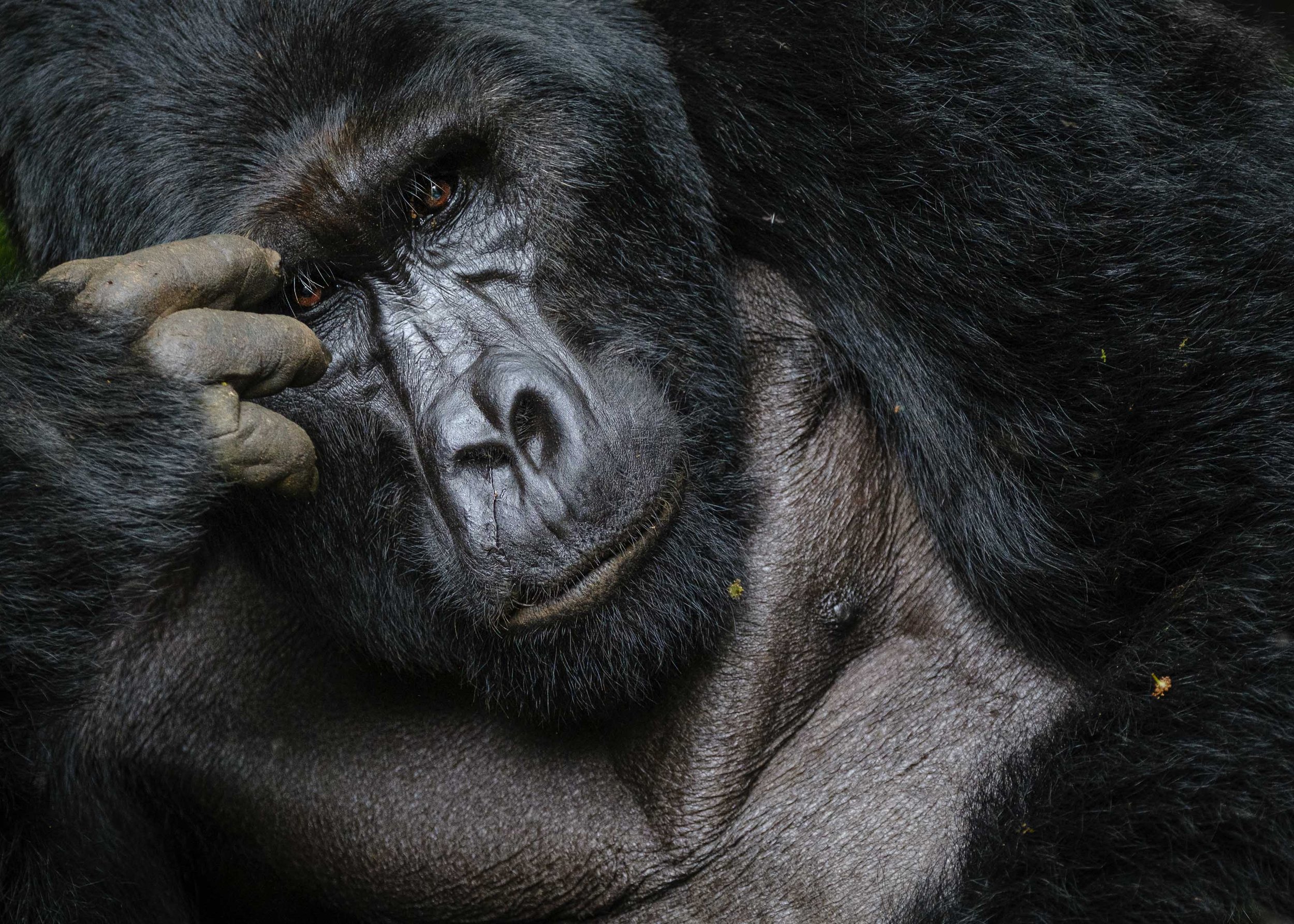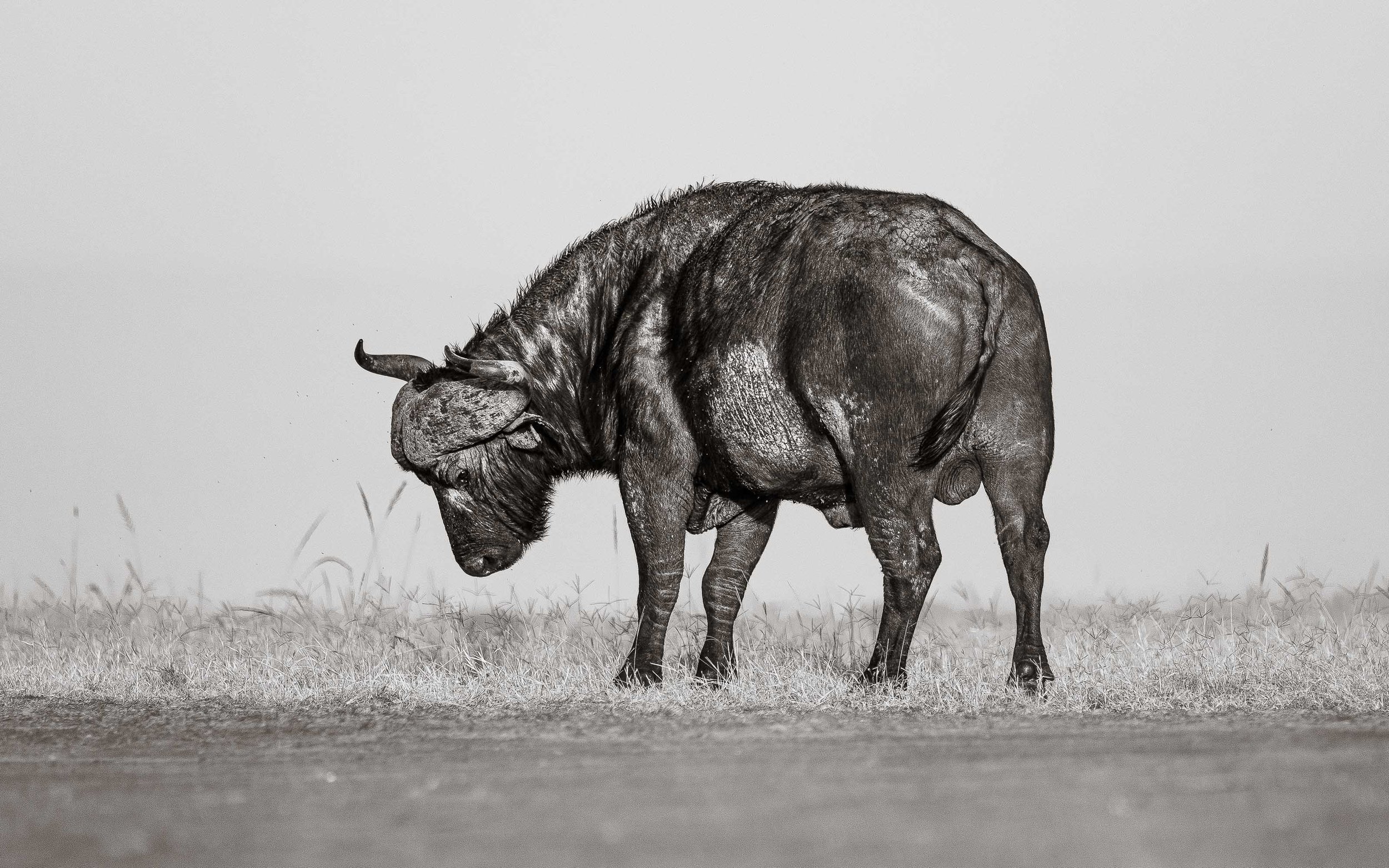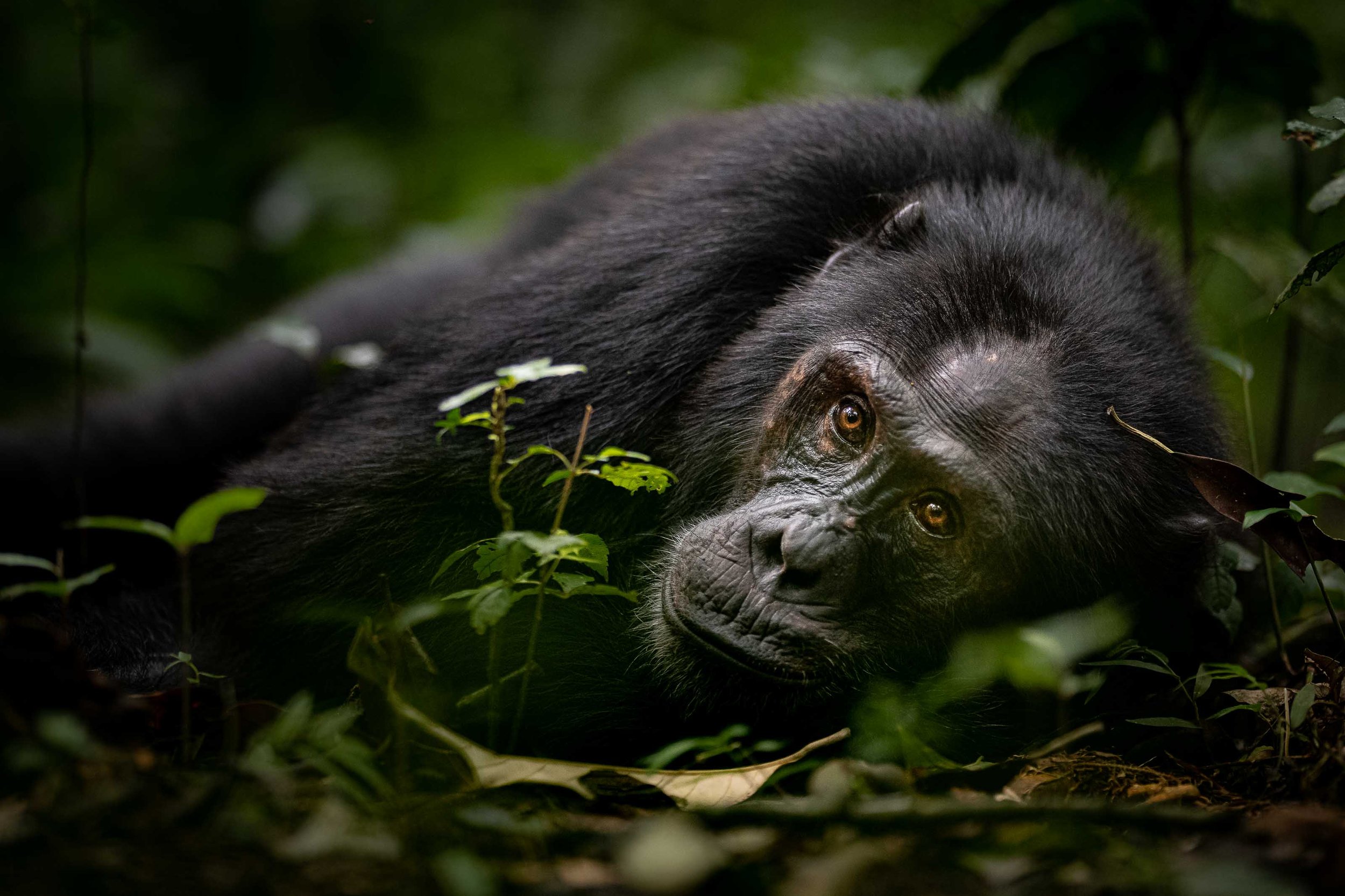Silverback Mountain Gorilla Photography, Uganda
An idea I’ve had is to post a few favourite wildlife images and the stories behind them.
For the first one of my favourite images, we’re at Bwindi in Uganda in November 2022, heading to the Rushegura mountain gorilla family in Uganda.
As an aside, this ties in nicely with World Gorilla Day, which is celebrated this month, and in September each year.
Meeting a Mountain gorilla family in Uganda
My group and I trekked for two hours. It had been raining, and it was damp and steamy, and our camera lenses kept fogging up.
Not long after our arrival, though, we found ourselves surrounded by most of the gorilla family. They were all over the place, wherever you looked, in front of us, to our sides, behind us, above us.
Face-to-face with the ‘Vice President’
A tracker tapped me on the shoulder and asked me to follow him. Just around the corner, on his own, was a male silverback gorilla named Karambezi. He was the second in the group hierarchy and was known to the trackers as the Vice President.
To my delight, he was no more than 3 metres from me. His head was down. He was eating, of course, as this seems to be all they do. I could not see his face. I know that 7 metres is the rule, but, well, on this occasion, that’s where I was put.
The story behind the gorilla photograph
If I could have asked one favour of this Silverback Gorilla - who was three times my size and one arm’s length from swiping me - it would be to give me a look. And sure enough, he soon rolled up, lifted his face, and this was the look.
I was able to take only a few pictures of him. I opted to keep my lens aperture less than wide open so I could capture the details of both his face and chest.
Thankfully, my lens had by now cleared itself of the fog. If you are to take only one lens on a mountain gorilla trek, a 70-200 is the one to take. It is good for 90% of the focal lengths you are likely to use, and its aperture is wide enough to deal with canopy shadow on an overcast day.
A stunning example of a silverback gorilla
Just as he was about to roll away into the forest, I felt a big weight push down my shoulders. I looked around to see that my own group had arrived and had pressed into the little space behind me and were using my shoulders as camera supports.
The trackers had nicknamed him the Vice President. I preferred to recognise him as the President Elect. However I understand now, two years hence, he is now President.
Facts about Silverback Gorillas
Here are some interesting facts about silverback and mountain gorillas in Uganda:
Leader of the Group: The silverback is the dominant male in a gorilla group. He is responsible for leading and protecting the family, making decisions about movement, feeding, and safety.
Physical Characteristics: Silverbacks are named for the distinctive silver hair that develops on their backs as they mature, typically around the age of 12. They can weigh up to 195 kg (430 lbs) and stand up to 1.8 meters (5.9 ft) tall.
Social Behaviour: Silverbacks maintain harmony within their group and act as peacekeepers. They also mediate conflicts between members and will fiercely protect the group from outside threats.
Lifespan: In the wild, silverbacks can live up to 35-40 years.
Mountain Gorilla Families
Habitat: Mountain gorillas are found in the Bwindi Impenetrable National Park and the Virunga Mountain Range, which spans Uganda, Rwanda, and the Democratic Republic of Congo.
Social Structure: Gorilla families typically consist of 5 to 30 individuals, including one or more silverbacks, females, juveniles, and infants. Each group has a clear hierarchy, with the silverback being the alpha.
Diet: Mountain gorillas are primarily herbivorous, feeding on leaves, shoots, stems, and occasional fruit. They can consume up to 34 kg (75 lbs) of food per day.
Conservation Status: Mountain gorillas are critically endangered, but conservation efforts in Uganda, particularly in Bwindi, have contributed to a gradual increase in their population. There are currently over 1,000 mountain gorillas in the wild.
Tourism and Conservation: Gorilla trekking in Uganda is a significant conservation tool, as a portion of the revenue from permits goes to protecting these endangered animals. Strict guidelines are followed to ensure the health and safety of the gorillas, including maintaining a minimum distance from them.
Uganda’s efforts to protect gorillas have made it a top destination for eco-tourism.
Book your Wildlife of Uganda adventure today
If seeing and photographing a Silverback and mountain gorilla family for yourself is a dream you’re committed to making happen, then get in touch ASAP to secure your place on one of my upcoming Uganda primates safari tours.
Join me for an unforgettable safari experience. Every moment offers a chance to marvel at the wonderful wildlife of Uganda, and you’ll come away with incredible photographs of Silverback Gorillas and other incredible Ugandan wildlife to enjoy for a lifetime.
Silverback Gorilla photos
This is an opportunity to embark on a once-in-a-lifetime adventure, capturing the essence of the country’s incredible wildlife and landscapes - one not to miss!
David





